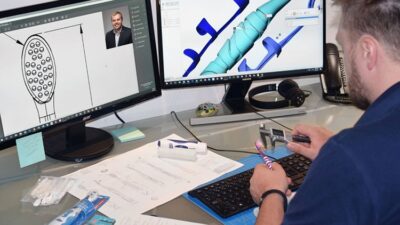The battery in your telephone will last you about a day prior to you have to charge it, same with your savvy. That vitality is exhausted through use, as you would expect, and when it runs out, you have to include some more. With a mechanical watch, in any case, there’s not a volt or amp of power to be seen. How could that be?
Aha!” you’re thinking, “that is simple. A mechanical watch utilizes a spring.” That’s right, in the least difficult terms; it uses a spring. In any case, consider that somewhat harder and the thought never again bodes well. Think what happens when you pack a spring—it will just stay compacted the entire while there’s power being applied to it. When that limitation is expelled, the spring extends, typically in a touchy and uncontrolled way. If you somehow managed to curl a spring and put a watch hand on its finish, it would turn quicker than the eye could see until the vitality had been exhausted in only seconds.
“Aha!” you state once more, “however a mechanical watch has gears. Only like a bike, the speed of the loosening up heart can be outfitted down to the suitable speed.” Again, that is right, however just when seen in the detachment of hypothesis. In all actuality that would require a rigging proportion of some 17,000:1, and there’s essentially not enough room.
Also, that is on the presumption that the heart slows down in a totally uniform way, which it won’t. Not exclusively will the torque decline as time passes by, yet any variations in rubbing that cause discontinuous quickening or deceleration will be misrepresented by multiple times. It’s essentially impossible.
What we have to give some control to the loosening up spring is a system that discharges little, even measures of vitality from the origin at fixed intervals. Enter the escapement. Sounds quite clear when you state it like that, yet it’s an issue that has tormented probably the best personalities—including virtuoso creator Leonardo Ad Vinci—for centuries.
A bowl that was being nourished by water on a constant progression was pictured by the Greek architect Philo of Byzantium as the earliest known instance of an escapement. It would tip once the spoon had filled, clearing the water and returning to its original position when its weight reached the level of the stabilizer. There was a shop here that discharged a bit of stone, suggesting how much time has passed since then.
Mass was relied on in some structure to give uniform time to a thousand years and a half, be it the progression of water, the death of sand through a limited opening, or the plummet of loads on a rope. These techniques were trustworthy, however being dependent on the stationary impact of gravity, they were not convenient. With the blast in oceanic investigation during the 1400s, an escapement was required that could be shipped quietly without yielding precision. Learn more about various kinds of watches available in the market, on this website: www.instagtrends.com
















Comments